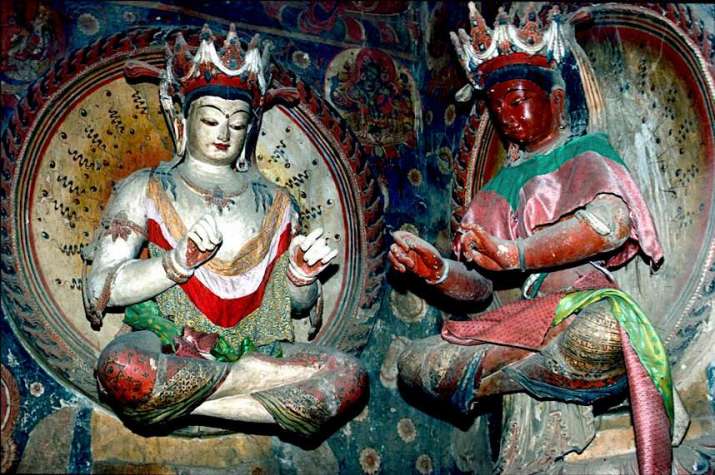
Core of Culture, a not-for-profit organization dedicated to safeguarding intangible world culture and assisting the continuity of ancient dance traditions, with a focus on Himalayan cultures and Buddhist ritual arts, has announced a four-part online lecture series titled Mudra and the Diamond Spheres.
The talks feature Sharon Lowen, on the topic “Mudra in Classical Indian Dance Hasta Abhinaya: Spiritual and Dramatic Expression Though the Hands;” Prajwal Vajracharya talking on “Mudra as an Agent of Transformation in Newar Buddhism;” Dr. Thinles Dorje speaking on “Mudra Transmission within Vajrayana Buddhist Monasteries;” and Dr. Christian Luczanits on the topic “Mudra and the Vajradhatu Mandala of the Tabo Assembly Hall.” The talks are introduced by Dr. Donald Lopez, professor of Buddhist and Tibetan Studies at the University of Michigan, and moderated by Core of Culture director Joseph Houseal.
These events are held online on Zoom on 7, 14, 21, and 28 October, at:
7am Los Angeles
9am Chicago | 10am New York
3pm London | 4pm Rome
7:30pm New Delhi & Leh | 7:45 pm Kathmandu
10pm Hong kong
In 2019, Kanden Rinpoche, the Abbot of Tabo monastery in Spiti Valley, Himachal Pradesh, India, asked Core of Culture to document the Vajradhatu Ritual performed there by the monks. What is remarkable is that the 11th century Assembly Hall at Tabo monastery is a three-dimensional Vajradhatu Mandala, comprised of murals, a ceiling, bas relief and sculpture. The monks perform the Vajradhatu ritual within the Vajradhatu Mandala.
Integral to the Vajradhatu ritual are thirty-seven unique mudra, or hand gestures correlating to the Vajradhatu deities, which are visualized by the meditating monks during the ritual. The Vajradhatu is the Diamond Sphere, a Mahayana Buddhist concept of the cosmos defined by aspects of the Buddha. It is an old extant Tantric Buddhist ritual, before the time of sectarian monasticism. Tabo monastery itself is the oldest operational monastery in India and the Himalayas, and a rare lasting example of 10th century monastic architecture, and splendid art of the Guge period. Tabo was founded in 996 by the Great Translator Richen Zangpo. Tabo is most famous as a site of translation of the Buddhist scriptures into Tibetan.
The transmission of mudra was essential to the spread of Buddhist practice and art. In 2005, His Holiness the Dalai Lama re-introduced the Vajradhatu ritual to Tabo monastery, in a way restoring it to one of its early settings, away from which its practice had fallen. Knowledge of the Assembly Hall iconography and purpose were revived. As part of the planned Vajradhatu documentation process, a research program into the nature and transmission of mudra has been developed uniting monks, western scholars, art historians, tantric priests, Classical Indian dancers, and students of Buddhism.
This project inaugurates with a Speaker Series by the research team members to launch Part One: Mudra Research Project. It will explore various traditions of transmitting mudra for the purposes of cultivating the mind, and take a first look connecting the art and texts associated with Tabo to the living ritual and ancient practice, newly introduced. The project constituents, research team, and audience are professionally diverse in many ways with various relationships to movement, art and texts. Brokering new conversations across disciplines, and finding ways to share modalities of spiritual and scholarly knowledge are goals of Mudra and the Diamond Spheres.
Core of Culture’s Mudra and the Diamond Spheres receives lead support from The Robert H. N. Ho Family Foundation with additional funding from the Kipper Family Foundation
For more information or to sign up for the free event, click here.
See more
Mudra & the Diamond Spheres (Yangchenma Arts & Music)
Core of Culture
The Robert H. N. Ho Family Foundation











